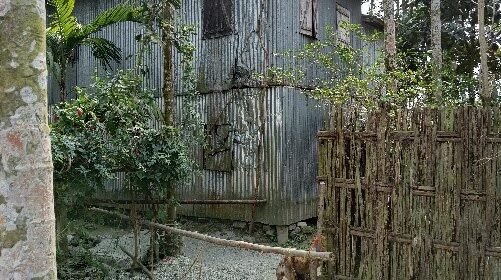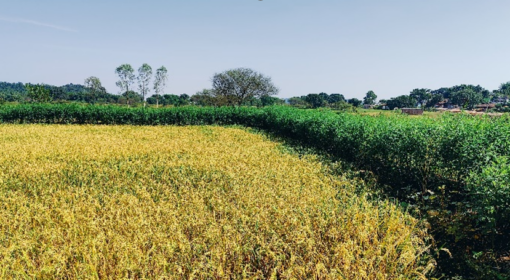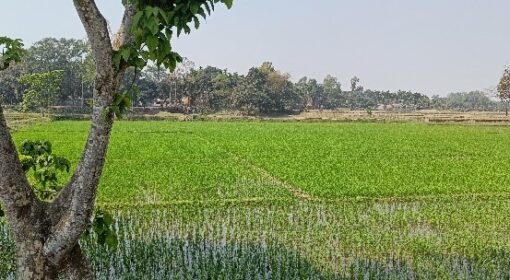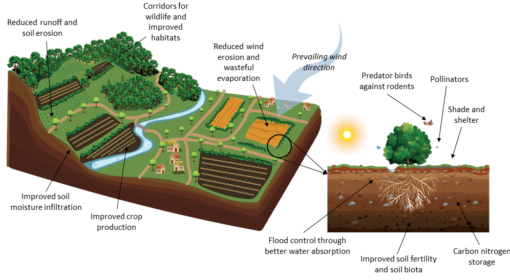by Frank van Steenbergen and Femke van Woezik
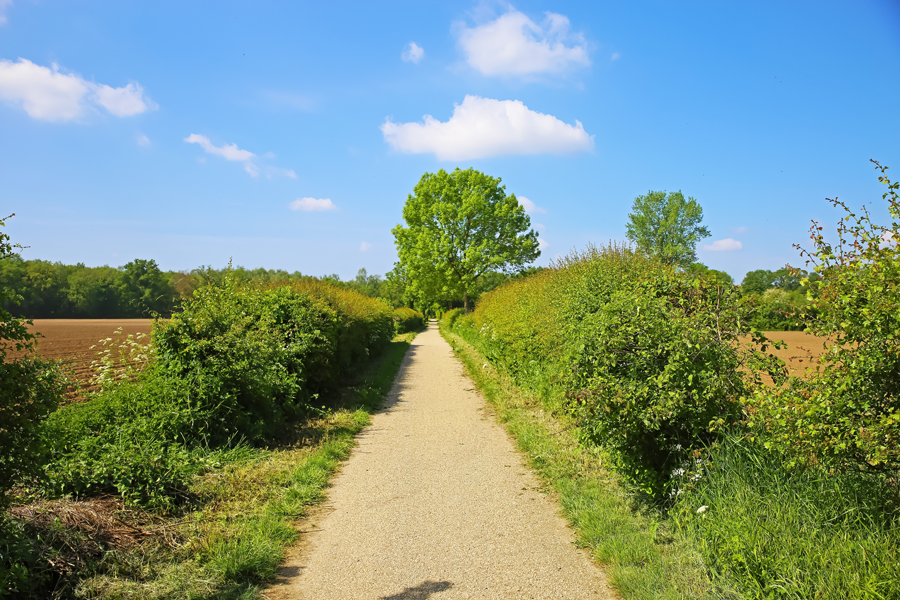
In a landscape hedges make all the difference. This is the point of the gem of a book, called Heg: een behaaglijk landschap voor mens en natuur” (Hedge: a sheltered landscape for humans and nature) by Kenneth Rijsdijk.
Originally planted to demarcate plot boundaries, to provide wood or to prevent livestock strolling or large predators entering farm fields, hedges have many more functions. They harbor enormous biodiversity: both in the plant material that make up the hedges and in the shelter they provide to mollusks, insects, small mammals or birds. This enormous variety builds up rich food chains. Hedges also connect habitats making it easier for wild life to move under the protection of their cover. When hedges are connected to local forests the variety of plant and animal species multiplies even more, and forests are carried along these transport routes. For all these reasons hedges are sometimes called bio-diversity boosters.
The litter under hedges create a healthy harbor for soil biota. The soils underneath hedges are more permeable and rich in humus. This helps to intercept rain runoff and to recharge groundwater along the roots of the hedge plants.
Hedges divide a landscape in smaller compartments. This prevents surface runoff from gathering speed and rilling out the soil, during rains. It is the same with wind: hedges break the windspeeds and keep fertile top soil from being carried away from the fields. They buffer against the spread of nitrogen., absorbing … They affect the micro-climate – providing shade, reducing exposure to wind, and regulating local temperature.
Hedges shelter numerous small animals that are natural enemies of pests, and help to control their numbers in surrounding areas. This effect can stretch as far as 100 meters. For example, the small wildlife that domiciles in the hedges can control rodent outbreaks. The healthy soil biota underneath the hedges supplies the surrounding fields with rain worms, sow bugs and others.
Hedges come in many shapes, the product of many different local histories, topographies and economic strategies. The way they are managed is important – best is light management with regular pruning and thinning. Yet trimming hedges in neat shapes and removing the litter underneath the hedges undermines many of their ecological functions. Higher hedges have more impact than lower hedges.
The effect of hedges goes far. There is an important cultural dimension. Boxed in hedged landscapes provides a sense of comfort, of belonging and orientation. Their appearance and maintenance reflects the local culture. It is clear that they improve the quality of life.
For all their benefits they bring, in many countries hedges are disappearing. Rijsdijk’s estimate according is that in the Netherlands 70% of all hedges have disappeared What is left instead are a bleak open agricultural areas, which he calls ‘misery landscapes’. What at first sight may appear as a contribution to farm efficiency and as facilitating larger operations, is questionable on closer examination: as top soil things out and disappears, more fertilizer is needed and crops have less protection from natural pests- all of which adds to the costs and vulnerability of agriculture.
The unfortunate disappearance of hedges is driven by policy. In this regard In the Netherlands there were three onslaughts. First were the land consolidation programs, whereby small parcels were swapped and combined – reimagining the landscape in linear fashion, with hedge rows seen as unnecessary and removed at large scale. Next came some disease outbreaks in the hedges – often propelled by the introduction of exogeneous plants as hedges. An additional disadvantage of such exotic species is that their flowering is too early and hence out of sync with local insect and bird life, undermining the inter-dependencies in the ecosystem. The third onslaught of hedge removal is upon us now, when land policies do not take into account the value or even the presence of hedges (for instance in manure disposal) creating the wrong incentives.
This write-up is a plea to appreciate and preserve hedges in landscapes all over the world, to understand the functions they harbor and the contributions they make to a richer world of biodiversity, regenerative agriculture and human safety. It is a plea also to take into account the bigger picture and see what policies and other drivers promote hedged landscapes.
Are you interested in reading more on this topic? Early 2023, a book on local climate management (Managing the Local Climate: A Third Way To Respond To Climate Change) will be published by https://practicalactionpublishing.com.

